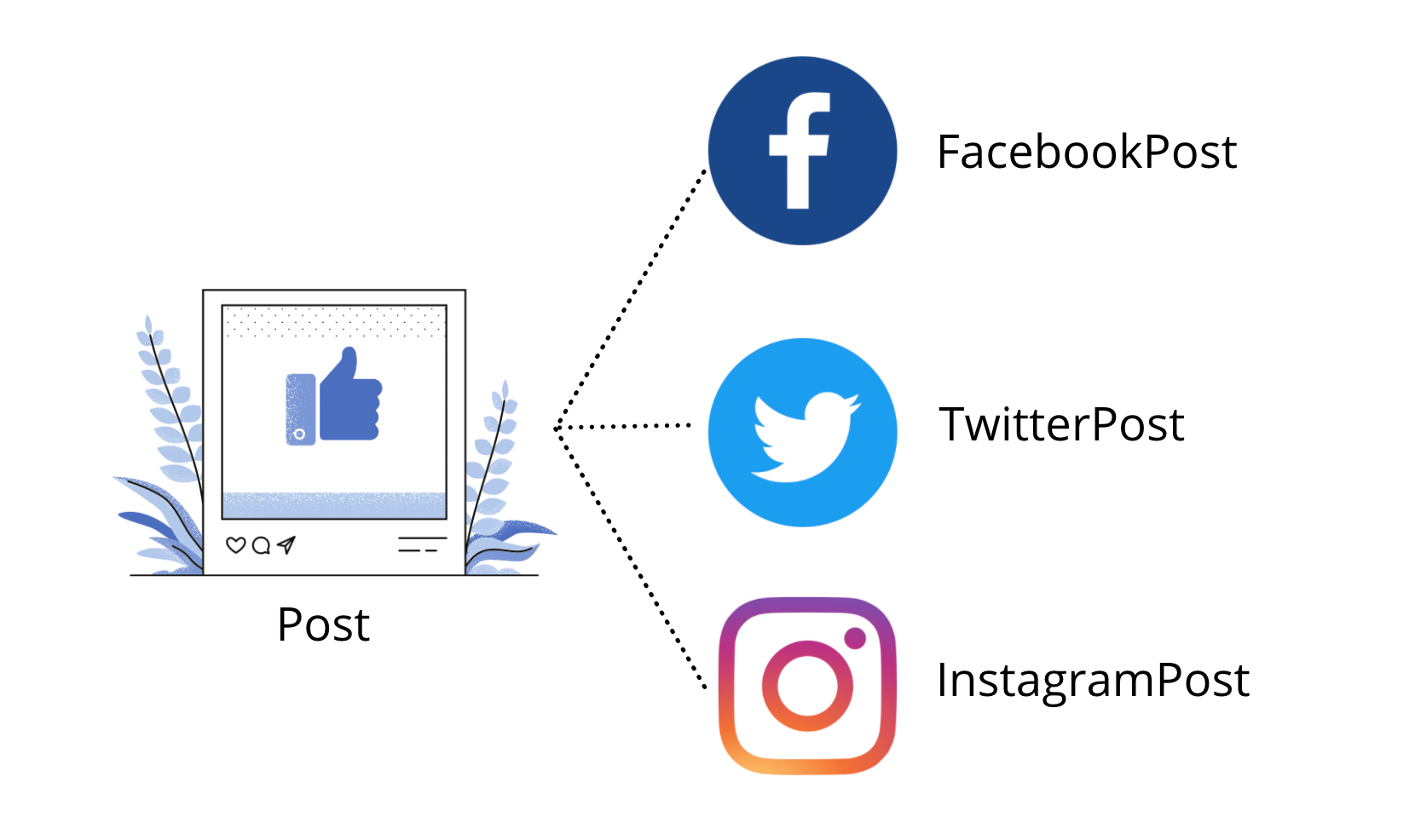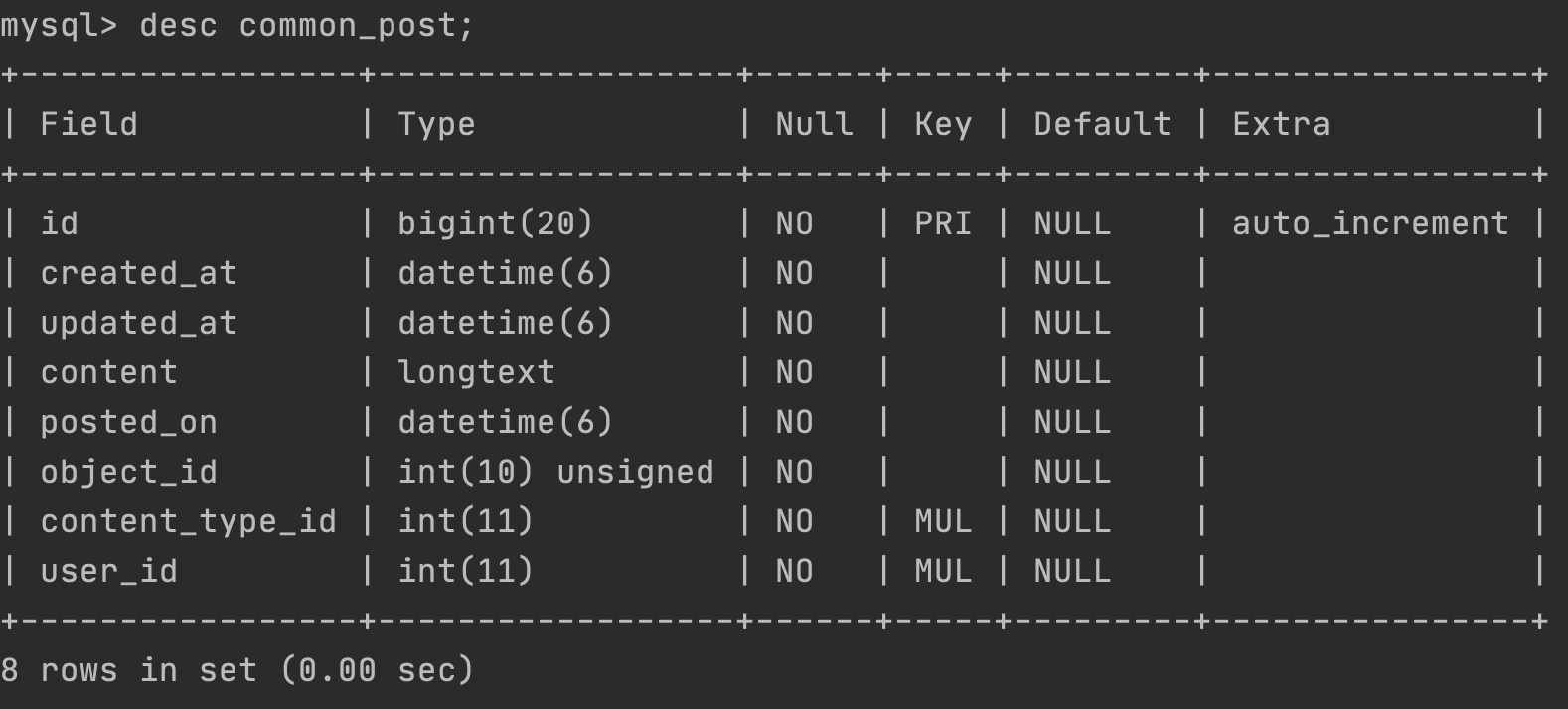How To Use GenericForeignKeys In Django

In the first part of the article, we learned about the contenttypes framework and the ContentType model. In this article, we will see how that is being used in the implementation of Generic Foreign Keys.
Let's first understand when we can need a generic foreign key, consider a case, where we want to store all social media posts made by a user on different sites, such as Twitter, Facebook, etc. One way would be to keep 1 model each for each social media site. Let's see how that model looks.
from django.contrib.auth.models import User
from common.models import BaseModel
class FacebookPost(BaseModel):
user = models.ForeignKey(User, on_delete=models.CASCADE)
content = models.TextField()
posted_on = models.DateTimeField()
class TwitterPost(BaseModel):
user = models.ForeignKey(User, on_delete=models.CASCADE)
content = models.TextField()
posted_on = models.DateTimeField()
class InstagramPost(BaseModel):
user = models.ForeignKey(User, on_delete=models.CASCADE)
content = models.TextField()
posted_on = models.DateTimeField()The above models will capture posts made by users on different sites, however, there are some problems.
- Not DRY: One issue that we see in the above approach is code repetition. This looks like a code-smell.
- Another issue is; to find all the posts made by a user, we have to fire 3 database calls and aggregate them in the application logic. Also, if we add a new supported site, application logic now needs to fire query on that table as well.
- A more subtle issue is, there is no relation between these models. Domain-wise, they all represent a single entity which is a Post, however, there is no hierarchy/relationship we can see in the code.
One solution we can use here to use GenericForeignKeys. We will create 1 single entity Post, which can be either a Facebook post, a tweet, or an Instagram post. Let's see how we can re-model the above case.
from django.contrib.auth.models import User
from django.contrib.contenttypes.fields import GenericForeignKey
from django.contrib.contenttypes.models import ContentType
from common.models import BaseModel
class Post(BaseModel):
user = models.ForeignKey(User, on_delete=models.CASCADE)
content = models.TextField()
posted_on = models.DateTimeField()
content_type = models.ForeignKey(ContentType, on_delete=models.CASCADE)
object_id = models.PositiveIntegerField()
content_object = GenericForeignKey()
class FacebookPost(BaseModel):
pass
class TwitterPost(BaseModel):
pass
class InstagramPost(BaseModel):
passBefore digging deep into the GenericForeignKeys constructs, let's see did we solve the problems we had the last time?
- We can clearly see, nothing is repeated, so DRY is achieved. All the common fields are moved to the Post table and any un-common fields can go into the corresponding tables. This solves our first problem.
- Now, we can do 1 query to the Post table to get all the posts made by a user. Even if a new site is added, the query won't change. This solves our second problem.
- Although there is some structure to the entities, we now have a parent entity Post, but by looking at the code, we can still not say how these models are related.
Now, let's see what are those 3 weird-looking fields, that we have added to our model definition.
- content_type: This is a
ForeignKeytoContentType. In the above example, if the post is of Facebook, content_type will point to the ContentType of FacebookPost table. The usual name for this field is “content_type”. - object_id: This field is used for storing primary key values from the models we are relating to. For most models, this means a
PositiveIntegerField. In our case, for the same Facebook post, this will be theidof the FacebookPost row. The usual name for this field is “object_id”. - content_object: We need to add a
GenericForeignKey, and pass it the names of the two fields described above. In our case, the value of this field will be the FacebookPost object, whoseidis mentioned in the object_id.

>>> from django.contrib.contenttypes.models import ContentType
>>> from django.utils import timezone
>>> fb_post = FacebookPost.objects.create()
>>> user = User.objects.last()
>>> post = Post.objects.create(content_object=fb_post, user=user, content='New fb post', posted_on=now)
>>> post.object_id == fb_post.id
True
>>> post.content_type == ContentType.objects.get(model='facebookpost')
TrueIf we see Post table in the database, we can see that it does not have content_object, which means content_object is a Django/ORM construct and hence, if we try to filter/exclude on content_object in Post table,

>>> Post.objects.filter(content_object=fb_post)
FieldError: Field 'content_object' does not generate an automatic reverse relation and therefore cannot be used for reverse querying. If it is a GenericForeignKey, consider adding a GenericRelation.
With the above, now we have 1 entity, which points to all the posts. In case if we need only posts from 1 site, we can filter/exclude on content_type.




